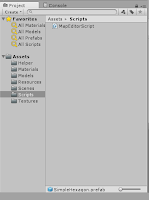- In what framework am I going to build this game.
- What program will I use to create models. (2D or 3D)
- In what language will the scripting be written.
Blender
The shear amount of features in Blender can cause sensory overload and even the most veteran developer can feel intimidated. When I first opened the application, I had no idea what to do and I almost closed it and quit but I really wanted to build this game so I persevered. The community built around this tool is incredibly helpful and answered so many of my beginner questions that I feel indebted to them.
My first task is to create a simple hexagon that will be used to tile game cells. These hexagons will eventually be textured to look like different terrain types as well as have additional functionality not yet determined. There are a lot of ways to create a hexagon but in my short time with Blender I feel I have found the quickest and easiest solution that is not already a top search result on Google.
Step 3. Create a Circle Mesh
Step 4. Modify the Circle properties to have 6 Vertices, set the fill type to Ngon, and set the Location to 0,0,0.
Step 6. Save the model. (I saved mine with a .blender extension)
Now we have a 3D model of a hexagon that will be the base model for our terrain tiles. Next task on our list is to boot up Unity and get this tile to display in the engine.
This click and drag approach won't work for more complex features such as a map editor so I need to add scripts to the scene in order to achieve some sort of dynamic object creation. The simplest way I was able to do this was by right clicking in the Assets folder and creating a new script; named MapEditorScript.
Double clicking on this script opens in my Visual Studio so I can edit the file. Scripts start out with two functions, Start and Update. From their names it is pretty obvious what they do. Code inside the start method is run once on initialization and code inside the update method is run once per game loop.
Now that the script is created, in order for the script to run it MUST BE attached to a game object. To do this, click the desired script and drag it onto an object in the scene. If this is not done, the script will not run and you will wonder why nothing is working. (It happened to me.) When everything is finished it will look something like this.
Now we have a 3D model of a hexagon that will be the base model for our terrain tiles. Next task on our list is to boot up Unity and get this tile to display in the engine.
Unity
Similar to Blender, Unity offers numerous advanced features that can intimidate a developer. When things get too chaotic and you feel like you are being discouraged by too many unknowns, take a step back and take some time to go over what you already know. This will help you stay on track while maintaining the vision of your game.
To start off I created a new Unity project and dragged the hexagon I created above into the "Assets" folder. Once in the folder, I clicked and dragged the model into the scene.
This click and drag approach won't work for more complex features such as a map editor so I need to add scripts to the scene in order to achieve some sort of dynamic object creation. The simplest way I was able to do this was by right clicking in the Assets folder and creating a new script; named MapEditorScript.
Double clicking on this script opens in my Visual Studio so I can edit the file. Scripts start out with two functions, Start and Update. From their names it is pretty obvious what they do. Code inside the start method is run once on initialization and code inside the update method is run once per game loop.
Now that the script is created, in order for the script to run it MUST BE attached to a game object. To do this, click the desired script and drag it onto an object in the scene. If this is not done, the script will not run and you will wonder why nothing is working. (It happened to me.) When everything is finished it will look something like this.
Conclusion
This week was spent learning the bare basics of Blender and Unity so I can begin to implement the core features of this game. Now I know how to create basic primitive shapes in blender as well as create a script that allows dynamic object creation at run time. Both of these concepts will be drawn upon heavily moving forward so it is important that I understand them fully.
Next week I plan on adding click detection so I can click on areas in the scene to create new objects. Once I can create new tiles with click events, I can implement logic to allow a user to create a dynamic map on the fly.







